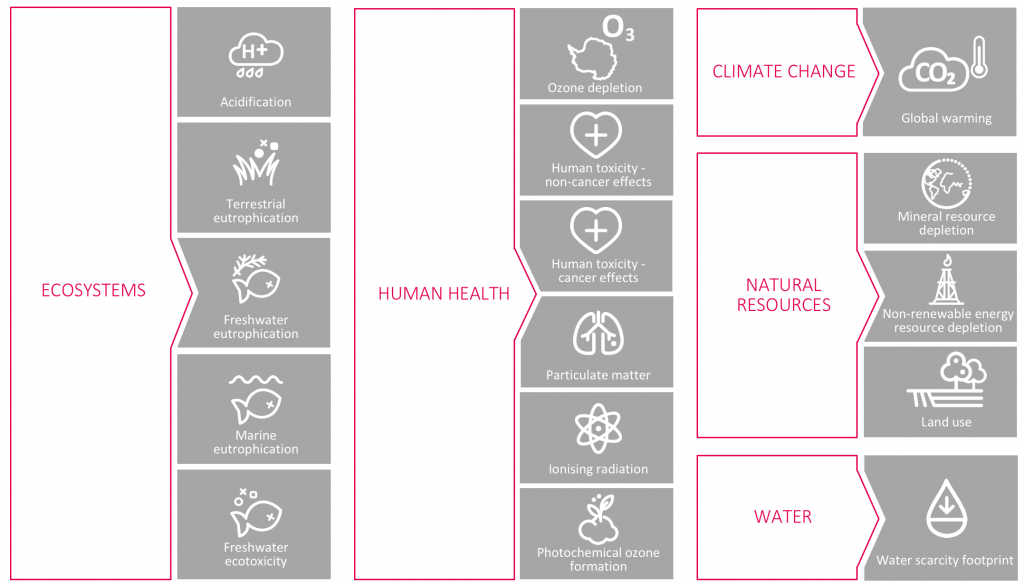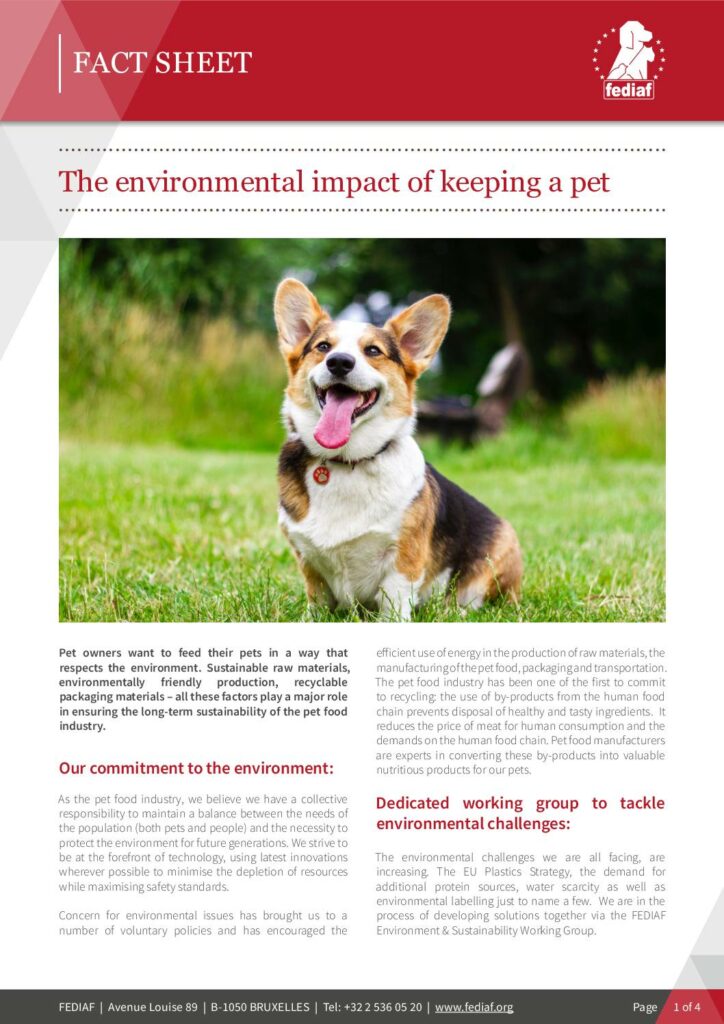Pet owners want to feed their pets in a way that respects the environment. Sustainable raw materials, environmentally friendly production, recyclable packaging materials – all these factors play a major role in ensuring the long-term sustainability of the pet food industry.
Our commitment to the environment:
As the pet food industry, we believe we have a collective responsibility to maintain a balance between the needs of the population (both pets and people) and the necessity to protect the environment for future generations. We strive to be at the forefront of technology, using latest innovations wherever possible to minimise the depletion of resources while maximising safety standards.
Concern for environmental issues has brought us to a number of voluntary policies and has encouraged the efficient use of energy in the production of raw materials, the manufacturing of the pet food, packaging and transportation. The pet food industry has been one of the first to commit to recycling: the use of by-products from the human food chain prevents disposal of healthy and tasty ingredients. It reduces the price of meat for human consumption and the demands on the human food chain. Pet food manufacturers are expert in converting these by-products into valuable nutritious products for our pets.
Dedicated working group to tackle environmental challenges:
The environmental challenges we are all facing, are increasing. The EU Plastics Strategy, the demand for additional protein sources, water scarcity as well as environmental labelling just to name a few. We are in the process of developing solutions together via the FEDIAF Environment & Sustainability Working Group.
Calculating the environmental footprint of pet food products:
Work has already started with the development of the methodology to calculate the Environmental Footprint of pet food products. FEDIAF is proud to be part of the European Commission initiative “Building the Single Market for Green Products” which aims to harmonise the communication of environmental performances of products and organisations for producers and consumers alike. In 2018 the European Commission endorsed the Product Environmental Footprint Category Rules (PEFCR) that we developed for pet food.
The PEFCR for pet food includes the full life cycle of a pet food product, ‘from cradle to grave’, including the following life cycle stages: ingredient sourcing, packaging production, pet food manufacturing, distribution, use and packaging ‘end of life’ (EOL). Furthermore, it provides detailed guidance on the use of primary and secondary data, data quality requirements, allocation rules, as well as the most relevant impact categories to be included when communicating on the ‘EF’ (Environmental Footprint) of prepared pet food for cats and dogs. More details can be found in glossary below.
This officially adopted methodology for calculating the product environmental footprint of prepared pet food for cats and dogs will help us to provide transparent environmental information on the basis of a harmonised European approach. We will continue collaborating with the EU institutions and Member States involved in this project to determine how this methodology should be used under future policy framework.
FEDIAF supports:
- The efficient use of all resources for the production of safe, palatable and nutritious pet food.
- The responsible design, operation and maintenance of processes and plants to minimise adverse environmental impacts on the local community and, in particular:
- To minimise emissions into the environment,
- To minimise objectionable odours,
- To improve the appearance of manufacturing sites and premises.
- The use and development of packaging, which makes less demands on irreplaceable resources and can be disposed of in ways, which cause minimum impact to the environment – all without loss of technological efficiency or safety.
- Schemes for the reduction, reuse, recycling and incineration of waste in order to reclaim energy.
- Clear, unambiguous and non-misleading environmental labelling (environmental claims).
Technical background

“Cradle-to-grave” system boundary diagram

What factors are measured in the PEF methodology?
The below figure ilustrates all the impact categories included in the PEF methodology to calculate the environmental footprint of pet food products.

